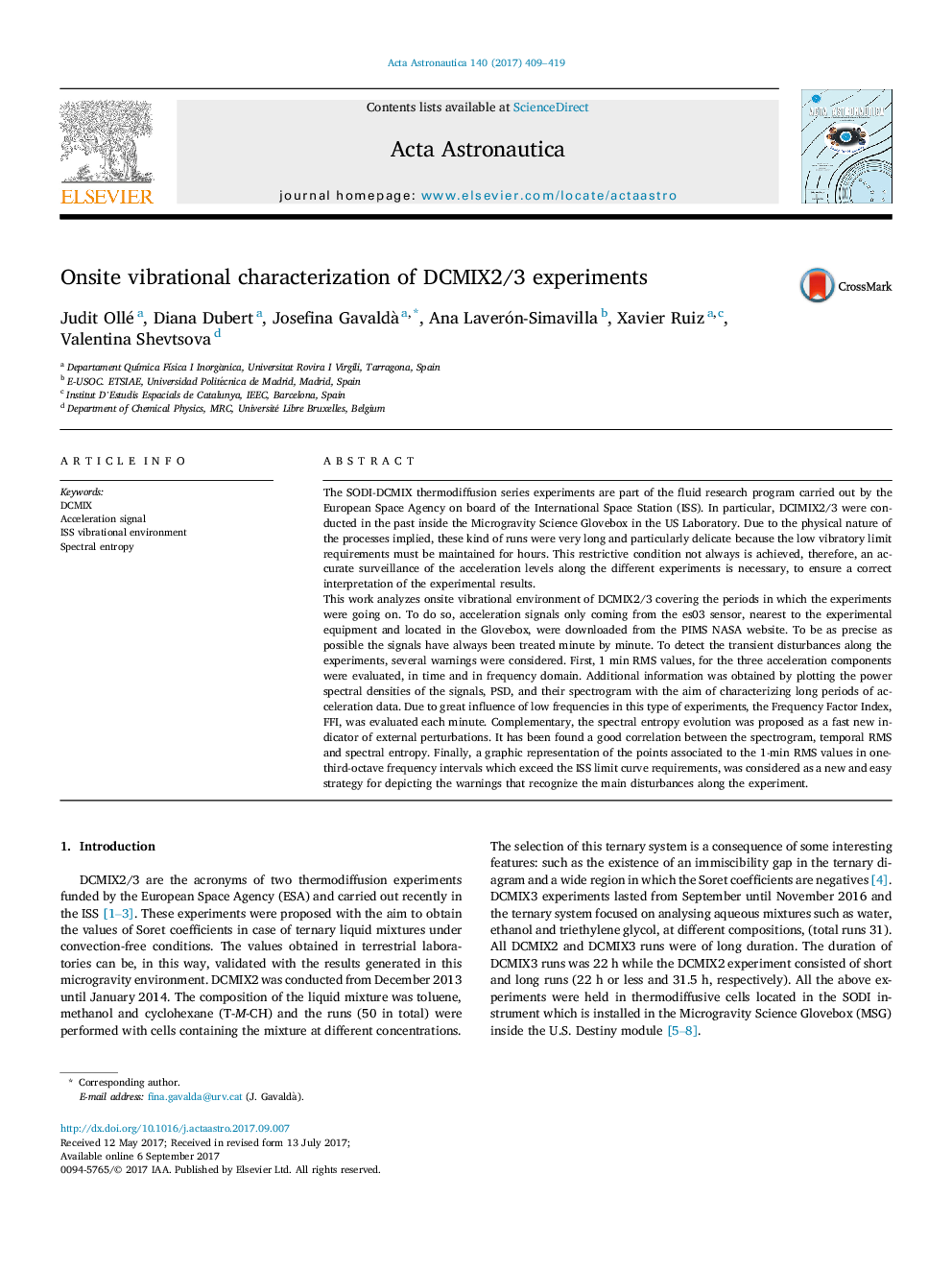| Article ID | Journal | Published Year | Pages | File Type |
|---|---|---|---|---|
| 5472130 | Acta Astronautica | 2017 | 11 Pages |
Abstract
This work analyzes onsite vibrational environment of DCMIX2/3 covering the periods in which the experiments were going on. To do so, acceleration signals only coming from the es03 sensor, nearest to the experimental equipment and located in the Glovebox, were downloaded from the PIMS NASA website. To be as precise as possible the signals have always been treated minute by minute. To detect the transient disturbances along the experiments, several warnings were considered. First, 1Â min RMS values, for the three acceleration components were evaluated, in time and in frequency domain. Additional information was obtained by plotting the power spectral densities of the signals, PSD, and their spectrogram with the aim of characterizing long periods of acceleration data. Due to great influence of low frequencies in this type of experiments, the Frequency Factor Index, FFI, was evaluated each minute. Complementary, the spectral entropy evolution was proposed as a fast new indicator of external perturbations. It has been found a good correlation between the spectrogram, temporal RMS and spectral entropy. Finally, a graphic representation of the points associated to the 1-min RMS values in one-third-octave frequency intervals which exceed the ISS limit curve requirements, was considered as a new and easy strategy for depicting the warnings that recognize the main disturbances along the experiment.
Keywords
Related Topics
Physical Sciences and Engineering
Engineering
Aerospace Engineering
Authors
Judit Ollé, Diana Dubert, Josefina Gavaldà , Ana Laverón-Simavilla, Xavier Ruiz, Valentina Shevtsova,
